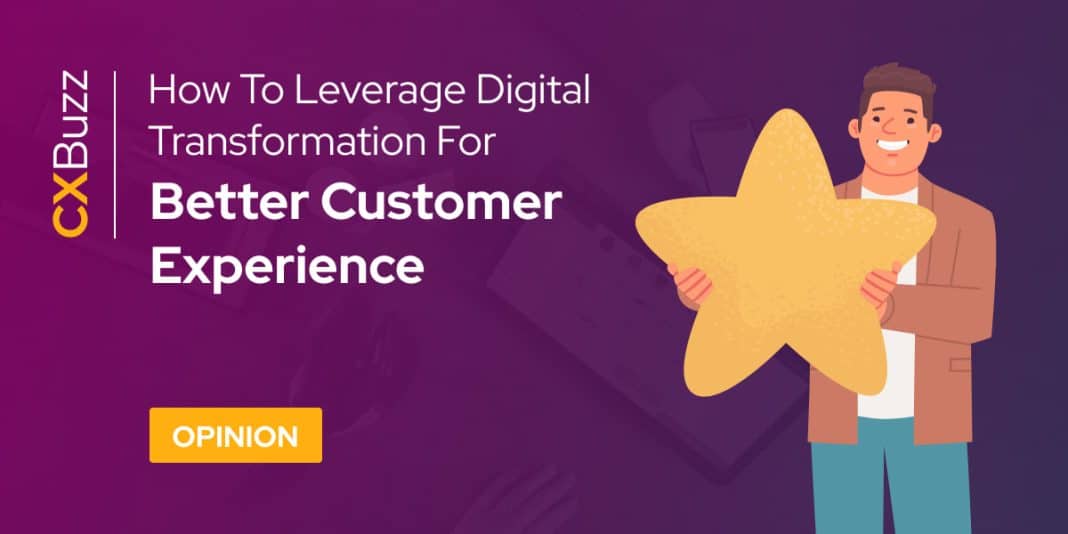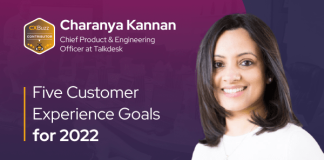The job of delivering a unique and exciting customer journey has never been easier with the tools we have access to now — namely social media, general web analytics, and CRM systems. Yet, there are still areas where all these data points and insights are treated as singular, one-dimensional, or irrelevant data. But we’ve seen in the biggest companies in the last three decades that data rules the world, and there is limitless potential to make good use of that data to improve the customer experience.
Digital Transformation plays an essential role in that development to break down silos and create much more valuable data sets through innovation. But, in my experience, it’s not solely about the tools you use but about the mindset to pursue a customer-driven market approach. This is where Customer Experience can shine and needs to leverage current digital trends to enable businesses to make good use of all that data.
So, here are some ideas on how you can leverage the digital transformation in your company to create awareness for a better customer experience.
1. Make research a major part of the development cycle
When you look more into old school development or very conservative business processes, usually it takes a lot of time and money to create a good enough product to sell to customers. However, in an agile world, we know that the focus should be on a first MVP to generate some pull from customers, which will help you define the development roadmap further.
Make sure to discuss the possibility of customer feedback as early as possible. Your team and other departments are usually very blind to apparent points, and especially development teams can be in love with their project, hindering the process of evolution through real customer needs.
It’s much easier if you are looking to expand a given service for a fixed customer base. You can A/B test various UX/UI features; you can add features to a particular group and get their feedback and then go from there, roll it out further or try something entirely different.
Customer Experience is a learning process, and no one gets it right the first time, so your market value comes from the speed you can adapt to market and customer needs with your product and service. In addition, you will have a much easier time integrating someone into your team who will take care of this along the process. And even though it seems like an additional cost that could weigh you down, the reality shows that you can avoid many expenses by simply involving your customer in many steps to ensure the adoption rate is secured to the maximum.
2. Create bridges if you must deal with silos
As mentioned in the beginning, many teams and projects may still be handled as silos, or necessary departments are not as connected as they should be. Looking at current trends, it makes sense to have cross-functional teams access all relevant data to create the best basis for success. Customer Experience Management is a holistic approach, and to be effective, you need data from all sorts of directions. Every touchpoint along the Customer Journey can be a critical data point to look at and evaluate. Businesses in the eCommerce space have the best grasp on this and learn early to adapt to create the perfect experience.
These are just a few relevant things to consider in eCommerce, from primary CRM data to website analytics, user behavior, financial history, personal situation, loyalty programs, or even ambassadorship. Customer Lifetime Value might also be highly interesting. Looking at just one metric will give you a false picture of your customer or your success.
The important part is to know where you can gain access to the information you need and that the team can access and link the data to their needs. So, in my personal experience, it makes sense to have at least IT, Sales and Marketing involved from the start, at least when you talk about new products and services. Invest earlier to save later costs traps.
3. Keep your eyes open for opportunities
One of the biggest opportunities you will encounter during a development phase is what you didn’t think of before. Developing software or a new process can be tiresome, but with the constant feedback of customers and early successes, you will be sure to be able to pull through. One of the most underrated effects during such a time, which especially cross-functional teams will benefit from, is the potential new ideas to use a given solution. What you build for one customer can certainly be attractive to others, even to other market segments, if you will.
Even certain sub-features might be interesting to sell on their own or use internally, which will create added value along the line for everyone involved. An interesting case would be with Corona apps. Sure, they help during the pandemic and keep track of everything, but even afterwards, the need for security is high, especially during more significant events or important company gatherings. The next potential use case is always around the corner. The better you leverage your data, your team’s knowledge, and the company’s processes, the better you can make a case for the holistic view that only the Customer Experience lens can usually capture.
In Conclusion…
During businesses’ ongoing digital transformation, many opportunities can lead to more transparency and a better understanding of the customer and the processes to keep them happy and loyal. The takeaway here is that this is a chance to create an improved vision for leaders and business enablers to get together and make better information flows and a better understanding of the value and what’s important. Using modern technology, a toolbox of management techniques and the right employee mindset can lead to success.
If you have any questions or would like to discuss CX in more detail, be sure to leave a comment here on CXBuzz or reach out on LinkedIn.






